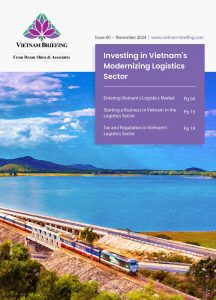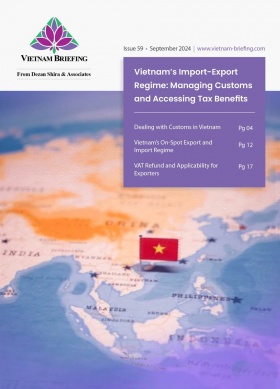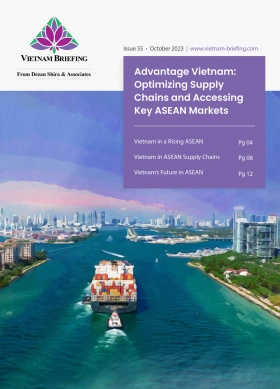Vietnam and China Manufacturing: Key Comparisons for Business Strategies
Vietnam is emerging as a cost-effective and strategic alternative to China for manufacturing, driven by competitive labor costs, growing high-tech investments, and favorable trade conditions, making it a key “China Plus One” destination for global businesses.
Vietnam, an emerging manufacturing hub in Asia, has established itself as a key role in the manufacturing industry and is poised to become a viable alternative to China. As companies seek to diversify their supply chains, Vietnam has become a prominent “China Plus One” destination, offering businesses a strategic manufacturing base in Asia.
Major global brands are establishing factories in Vietnam, with companies like Samsung, Nike, Adidas, LG, and Foxconn relocating operations from China to Vietnam. This strategic move is driven by the increasing demand to invest in Vietnam as a more budget-friendly and dynamic option compared to the manufacturing sector in China.
Additionally, the US-China trade war imposed hefty tariffs on Chinese goods, while Vietnamese products remain easily importable. Following Trump’s victory in the US election, he announced that he would implement a 10 percent tariff on China, “on top of any existing tariffs,” until the country took steps to halt fentanyl smuggling.
Labor costs
Cost plays a crucial role for businesses when selecting a manufacturing location. According to a Boston Consulting Group report, China’s average hourly labor cost was US$6.5 in 2020, compared to US$3 in Vietnam. This makes Vietnam a more affordable option for labor-intensive industries. Furthermore, Vietnam boasts a sizable and well-educated labor force, making it an appealing destination for manufacturing. To facilitate the skills of its workforce, the government has implemented numerous vocational education and training programs.
The country’s low labor costs have made clothing and textile the dominant manufacturing sectors. From sportswear giants like Nike and Adidas to fashion icons like Zara and Patagonia, the diversity of brands opting for Vietnamese production is a testament to the country’s growing significance in the textile sector. Following the easing of COVID-19 lockdowns, Nike declared Vietnam its largest supplier, accounting for 50 percent of Nike brand footwear in 2023.
Manufacturing capabilities
China boasts the largest manufacturing capacity with a vast range of products available for production, making it capable of manufacturing virtually anything. China is renowned for producing high-tech items like electronics and machinery. A World Bank report from 2023 states that China represented 26.57 percent of global high-tech exports, solidifying its position as the world’s top producer of high-tech goods.
While Vietnam has a more limited scope, it still has the capacity to produce most general products. Vietnam is recognized for producing textiles, footwear, and furniture, with the textile sector being the largest contributor to the country’s exports.
Simultaneously, Vietnam is steadily emerging as an important hub for high-tech manufacturing, with major companies such as Samsung, LG Electronics, Nokia, and Intel making multi-billion-dollar investments in the country. Other sectors growing in Vietnam include information and communications technology, automotive, and medical devices.
Although China remains the world’s largest manufacturing economy with more experience, Vietnam is rapidly closing the gap. However, China’s larger scale gives it an advantage in producing custom products for companies.
After China, Vietnam ranks second among 11 observed countries in the 2025 Asia Manufacturing Index Rankings of Dezan Shira & Associates, showing its competitiveness compared to other manufacturing hubs.
Read More: Vietnam Manufacturing Tracker: 2024-25
Product quality
Product quality is a key consideration for both businesses and consumers. Both Vietnam and China have made significant progress in enhancing their manufacturing standards and quality control measures.
Vietnamese manufacturers have invested in advanced machinery and technology to ensure high-quality products and have been working to align their quality standards with international norms. According to the WTO’s 2020 Trade Policy Review (TPR) report on Vietnam, the country has a total of 12,888 TCVNs (Vietnam National Standards) in effect, with 60 percent aligned with international, regional, or foreign standards (an increase from 40 percent in 2013), covering most areas of socioeconomic life. In addition, Vietnam’s Ministry of Industry and Trade (MOIT) is actively working to implement more stringent standards for products from Vietnam.
Similarly, China has made notable advancements in product quality over the years. Chinese manufacturers have focused on research and development (R&D), improved quality control systems, and obtained certifications to meet global standards. In China, certified quality control providers must adhere to the ISO17025 management system, recognized by the China National Accreditation Service for Conformity Assessment (CNAS) and a member of International Laboratory Accreditation Cooperation (ILAC).
However, it is important to recognize that quality can vary between manufacturers and industries, so thorough due diligence and careful supplier vetting are essential to ensure consistent product quality.
Quality concerns
Inconsistencies in product quality can arise, particularly from smaller manufacturers who may not meet international standards. While affordable, mass-produced items dominate the market, high-end options may be scarce, raising concerns about durability and performance.
To address these issues, Vietnam is implementing new regulations regarding the origin of goods, focusing primarily on exports and imports to improve market transparency and protect consumer rights. The MOIT has proposed that the government will develop a circular establishing criteria for ‘Made-in-Vietnam’ products. This circular will serve as a basis for determining whether a product is genuinely made in Vietnam or sourced from elsewhere. If MOIT’s proposal is approved, the drafting process will take place from December 2024 to October 2025.
Shipping logistics
China, known as the “world’s factory,” has a logistics industry that is crucial to the global supply chain. Due to its large geographical size and rapid economic development, China’s logistics sector has transformed into a sophisticated and dynamic system. China is home to thousands of shipping companies and freight forwarders, offering global shipping services through a variety of methods. Their shipping rates are affordable and among the most competitive worldwide. With vast harbors and a massive fleet of ships carrying millions of tons of cargo annually, China’s shipping industry benefits from a highly competitive environment that keeps prices low despite high volumes.
Vietnamese shipping companies are increasingly competitive, offering rates that are comparable to those of their Chinese counterparts for shipments to the United States and Europe. Many of these companies provide comprehensive “door-to-door” services, enabling shipments directly from the factory to warehouses in the US. The typical ocean freight transit time from Vietnam to the US ranges from 24 to 41 days, which is similar to the shipping duration from China. Consequently, in the realm of logistics and international shipping, the competition remains well-balanced, despite China’s more advanced infrastructure in this sector.
Availability concern
Vietnam excels in textiles, footwear, and food products but has limited capacity compared to larger manufacturers like China. Challenges in logistics and supply chain management can lead to product availability issues, particularly during peak demand or shipping disruptions.
Vietnam an attractive destination under “China Plus One” strategy
The trade war between the US and China, which began in 2018, has led to significant shifts in global supply chains. As the US imposed hefty tariffs on Chinese goods, many companies sought alternatives to avoid the higher costs of sourcing from China.
Due to its proximity to China, affordable labor costs, and advantageous trade conditions, Vietnam has become a “China Plus One” destination for companies looking to diversify their supply chains away from China. Since the start of the US-China trade war, Vietnam’s exports to the United States have risen significantly, fueled by higher demand for Vietnamese products and the country’s emerging reputation as a dependable manufacturing hub.
The US–Vietnam Comprehensive Strategic Partnership acknowledges Vietnam’s tremendous potential as a preferred trading partner for the US investments in high-tech sectors, such as semiconductor production and electronic components manufacturing, and highlight Vietnam’s shift towards value-added production and technological advancement. Tech giants like Hana Micron Vina, Amkor Group, and Luxshare-ICT have increased their operations in Vietnam, driving export growth and supporting its economic development.
Conclusion
Vietnam’s strategic position as an emerging manufacturing hub in Asia has made it a viable alternative to China for many global companies. This shift has been further fueled by the US-China trade war, with many companies looking to move production to avoid tariffs on Chinese goods. As a result, Vietnam has experienced a surge in exports, particularly in the textile and high-tech sectors, and has attracted significant foreign investment.
Despite challenges such as limited infrastructure compared to China, Vietnam’s efforts to enhance product quality standards, invest in advanced technologies, and expand its manufacturing sectors ensure it will continue to grow as a key player in global supply chains. However, Vietnam must strategically manage its relationship with the US to maintain its position and avoid the impact of populist trade policies.
About Us
Vietnam Briefing is published by Asia Briefing, a subsidiary of Dezan Shira & Associates. We produce material for foreign investors throughout Asia, including ASEAN, China, and India. For editorial matters, contact us here and for a complimentary subscription to our products, please click here. For assistance with investments into Vietnam, please contact us at vietnam@dezshira.com or visit us at www.dezshira.com.
Dezan Shira & Associates assists foreign investors throughout Asia from offices across the world, including in Hanoi, Ho Chi Minh City, and Da Nang. We also maintain offices or have alliance partners assisting foreign investors in China, Hong Kong SAR, Dubai (UAE), Indonesia, Singapore, Philippines, Malaysia, Thailand, Bangladesh, Italy, Germany, the United States, and Australia.
- Previous Article Investing in Vietnam’s Modernizing Logistics Sector – New Publication Out
- Next Article Nghe An Province Approves US$590 Million Singaporean Textile Investment









